- 注册
- 2005-12-07
- 消息
- 21,757
- 荣誉分数
- 5,877
- 声望点数
- 373
咱村有些家长还对数论问题不屑一顾,切得晓伐? 
高中生有志向,刻苦专研,才能荡舟查尔斯河呀。
(被阅读 1206 次)
A- A A+
只因在电视上多看了一眼数学家张益唐的纪录片,中学生开始沉迷数论,还独立发表了一篇“博士级别”数学论文。
解决的数学问题,还是曾难住3位正经数学家整整27年的那种。
当这3位数学家中的卡尔·波梅兰斯(Carl Pomerance)本人,看到这篇出自17岁少年之手的论文时,也不禁感慨:
这是一篇会让任何一位数学家都为之自豪的论文。
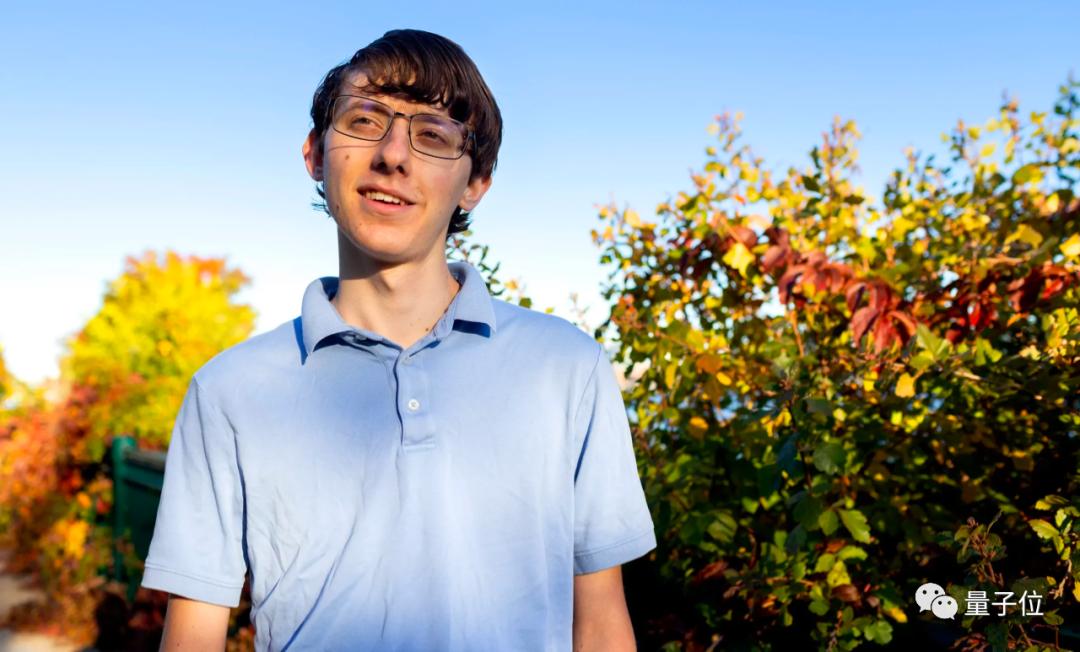
△图源:Quantamagazine
少年名叫丹尼尔·拉森(Daniel Larsen)。
就在今年,他这篇有关卡迈克尔数的论文,已经正式发表在《国际数学研究通告》上,还为他赢得了10万美元(约合人民币72万元)奖学金。
他本人也告别高中生活,成为了麻省理工学院数学专业的大一新生。
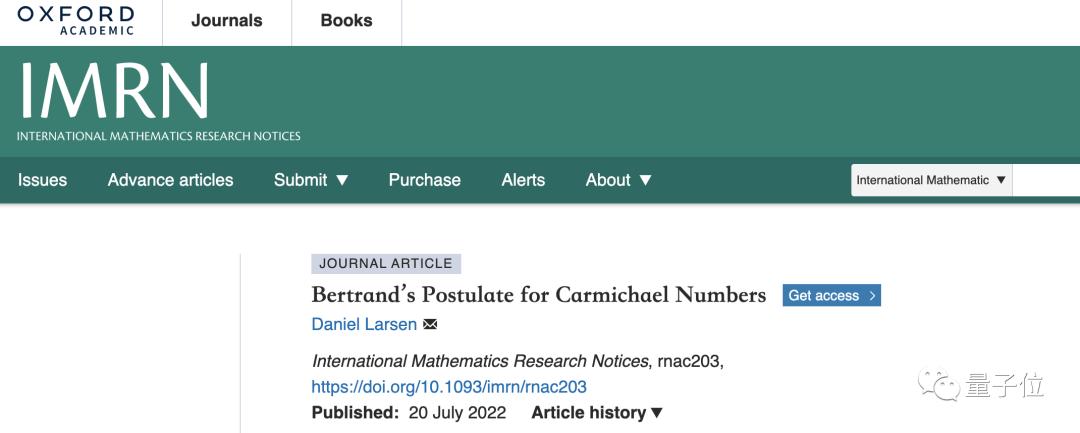
事实上,丹尼尔本人在家乡早已是小有名气的“神童”:
一家子都是数学家,他本人13岁就在《纽约时报》上发表过填字游戏,是这个项目史上最年轻作者。
看上去一路顺风顺水,但在与外界交流时,他却说,自己做啥都“像是在挣扎”。
还自曝:喜欢走捷径。
因张益唐“入坑”数论,屡挫屡战
正如开头所说,丹尼尔和数论的缘分,始于一部有关张益唐的纪录片。
张益唐是传奇美籍华裔数学家,因“孪生素数猜想”一举成名。但在功成名就之前,张益唐的经历可谓半生潦倒:
博士毕业后因未拿到导师推荐信,学术道路坎坷,甚至不得不靠快餐店收银员等工作糊口。
但即便如此,张益唐也并未放弃对数论的钻研,直到58岁终于大器晚成。
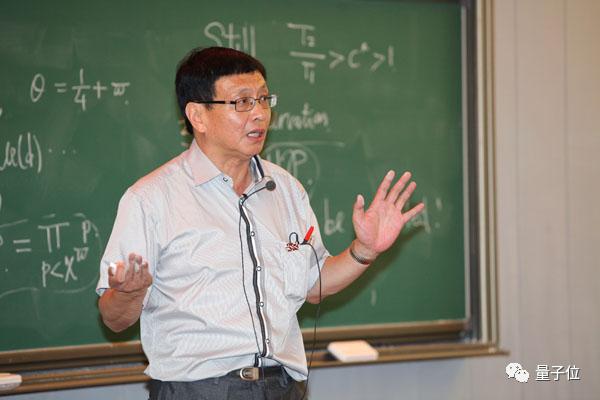
△张益唐,图源:北京大学招生网
或许正是这种对数论的执着触动了丹尼尔。他开始抑制不住地在脑海中不断思考数论。
一开始,他同样把目光瞄向了“孪生素数猜想”:张益唐的成果首次证明了存在无穷多对间隔有限的质数,但他证明的间隔是7000万,这个数字仍可以进一步缩小。
陶哲轩和今年的新晋菲尔兹奖得主詹姆斯·梅纳德,就都做过这方面的工作。
虽然只是一名中学生,丹尼尔还是试图通过阅读张益唐、陶哲轩和梅纳德在这一问题上发表的论文,搞清楚背后的数学原理。
但最终他不得不承认:
这对我来说几乎是不可能的。他们的论文太复杂了。
尽管如此,丹尼尔并没有被当场劝退。相反,他一头扎进了数论论文的海洋,坚持寻找能激发他灵感的那一个“巨人的肩膀”。
终于在2021年2月,17岁的丹尼尔·拉森和卡迈克尔数邂逅了。

△图源:THE SOCIETY FOR SCIENCE
300小时攻克数论难题
卡迈克尔数的定义是:
一个正合数n,对于所有跟n互质的整数b,b^n-b都是n的倍数,那么n就是一个卡迈克尔数。
根据费马小定理,所有质数都具备这种特质,因此卡迈克尔数又被称为“伪质数”。
在1899年,数学家Alwin Korselt还提出了一种卡迈克尔数的等效定义,当正合数n满足以下三个性质时:
必须包含不止一个质因数;
质因数均不重复;
对于每一个能被n整除的质数p,p-1也可以被n-1整除
它就是一个卡迈克尔数。
举个例子,最小的卡迈克尔数是561,561=3×11×17,而2、10和16均能被560整除。
1994年,雷德·阿尔福德(Red Alford)、安德鲁·格兰维尔(Andrew Granville),以及前文提到的卡尔·波梅兰斯三位数学家,在《数学年刊》上发表论文,证明了卡迈克尔数有无穷多个。
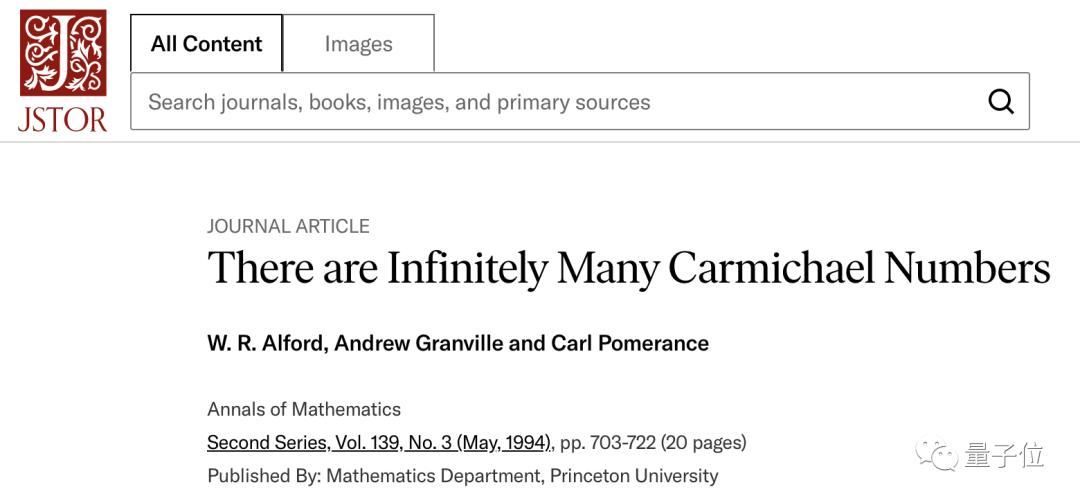
但当他们试图证明这无穷多个卡迈克尔数之间的间隔时,新的困难出现了。
三位数学家认为,这个问题可以转化为这样一种证明:给定一个足够大的数字X,在X和2X之间一定存在一个卡迈克尔数。
遗憾的是,从1994年到2021年的27年之间,并没有人完成这个证明。
难度可想而知。因此当丹尼尔的爸爸——印第安纳大学路明顿分校数学教授迈克尔·拉森(Michael Larsen)得知儿子想要攻克这个问题时,他的第一反应是“这可能会变成一段负面经历”。
但丹尼尔的反应却是:
你的意思是我仍有10%的机会!
于是,他坚定地投身其中。并且在约300个小时(12.5天)的努力之后,他的论文出炉了。
前面说到,一开始接触数论,丹尼尔就研究过陶哲轩和梅纳德的论文。而在这个有关卡迈克尔数的证明上,他巧妙地站在了前辈的肩膀上。
他修改了梅纳德在证明孪生素数间隔时的用到的方法,将之与阿尔福德、格兰维尔和波梅兰斯的方法相结合。如此一来,就能够确保他最终得到足以产生卡迈克尔数的素数区间。

实际上,这篇论文不仅证明了卡迈克尔数一定会出现在X和2X之间,其证明方法还适用于更小的间隔。
另一位致力于伪质数研究的数学家、沃福德学院的Thomas Wright就表示,“这篇论文改变了研究卡迈克尔数的许多事情”。
值得一提的是,卡迈克尔数与密码学和通信安全息息相关。
最典型的非对称加密算法RSA中,生成公钥的第一步就是选取一对很大的随机质数。
而当数字比较大时,想要判断其是否为质数就很麻烦,也很容易与其它数字混淆。这时候,卡迈克尔数的相关研究就能派上用场了。
出身数学世家
如果说与数论的机缘是从张益唐的纪录片开始,那么丹尼尔与数学的缘分在他更小的时候就已经显现。
这与他的家庭氛围息息相关。
丹尼尔出身数学世家,父母都是印第安纳大学的数学教授,他在浓厚的数学氛围下长大。
他的父亲迈克尔·拉森是1977的IMO(国际数学奥林匹克竞赛)金牌得主,本科毕业于哈佛大学,后于普林斯顿大学取得博士学位。
2013年,迈克尔·拉森因“对群论、数论、拓扑学和代数几何的贡献”而成为美国数学会会员。
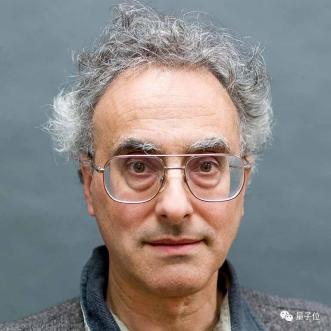
△图源:印第安纳大学
丹尼尔4岁的时候,父亲组织了一个“数学圈”,周六下午为当地孩子开设免费小组,谈论一些能让孩子们对数学产生兴趣的古怪话题,丹尼尔也参与其中。
在这样的培养之下,丹尼尔从小就对解谜感兴趣,并且虽然不太喜欢打游戏,但却很喜欢鼓捣电脑,去钻研游戏背后的工作机制。
12岁时,丹尼尔就写出了填字游戏生成软件,并且13岁就在《纽约时报》发表了自己的作品,到现在还保持着“最年轻作者”的记录。

△右一丹尼尔,图源:indianapolismonthly
实际上,在丹尼尔研究卡迈克尔数时,他的父亲就是他的第一任导师。
虽然父亲并不对儿子搞定这么难的数学问题抱太大希望,但他还是给予了儿子情感上的支持,并且以对待博士生的态度来指导儿子。
值得一提的是,丹尼尔的姐姐安妮也是“数学神童”,她在高中时就已经开始学习印第安纳大学研究生水平的数学课程。现在,安妮正在MIT攻读数学博士学位。
从小在数学的熏陶下长大,丹尼尔自己也逐渐形成了对数学的一套理解。
他认为现如今互联网时代削弱了人们的社区意识以及共同目标,人们与外界的联系越来越少,这形成一个“元问题”,阻碍了其他问题的解决。
而丹尼尔将这视作数学的另外一面,称数学可以建立共识,它充满了和谐与统一。他还说:“上帝是个数学家。”
偶尔躺平的“小数学家”
数学之外,丹尼尔可谓兴趣广泛,小提琴、钢琴、魔方、国际象棋等均有涉猎。
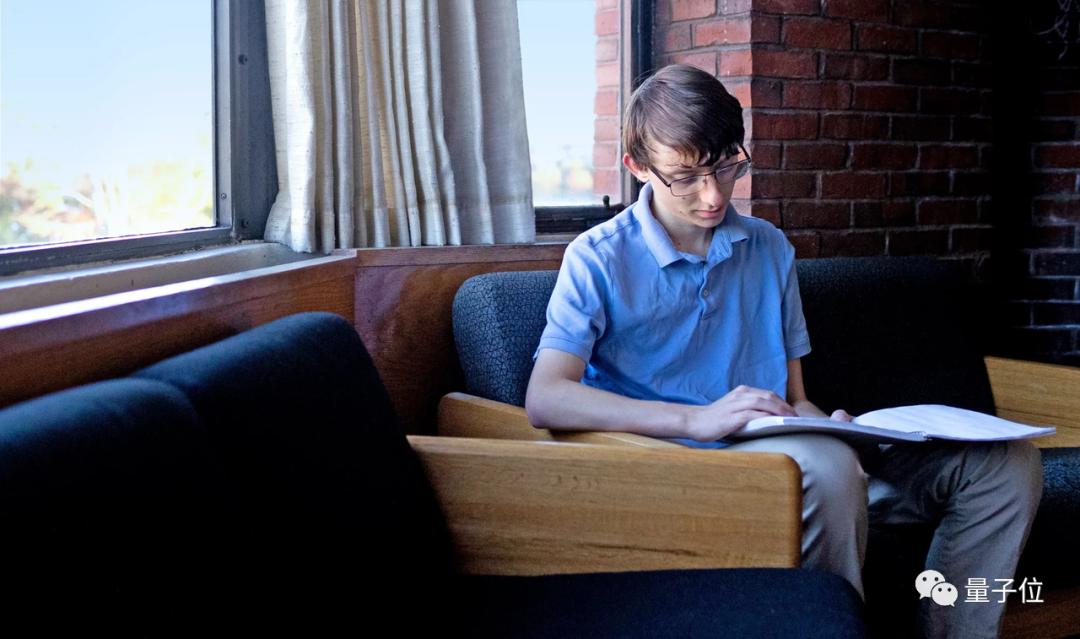
△图源:Quantamagazine
他小时候就能够45秒内解出一个魔方,并且还设计了一个乐高机器人,可以把铜便士和锌便士分开。
不过“少年天才”的光环之外,丹尼尔也像其他年轻人一样,喜欢偶尔躺平,喜欢走“捷径”。
就比如说,丹尼尔不太喜欢夏天,一到夏天,他的心情就开始低落,即使在研究卡迈克尔数也会这样,那时他暂时“撂下挑子”,去看了夏季奥运会。
甚至还自述有过这种情况:
感觉冷但是就是懒得拿外套。
想看黑板上的字,但离得有点远就没过去看。
并且当被问到“不擅长什么时”,丹尼尔表示自己“做什么都像是在挣扎”。
我经常选择阻力最小的道路。如果我对某种情况感到不快,我可能并不会积极地去处理它。
目前,丹尼尔已经步入了麻省理工的校园,他同样面临着和大多数人一样的迷茫,不确定下一步要解决什么:
我只是在上课…… 并试图保持开放的心态。
相关推荐

高中生有志向,刻苦专研,才能荡舟查尔斯河呀。

只用300小时,17岁高中生解开困扰数学家27年难题
文章来源: 量子位QbitAI 于 2022-10-15 19:42:15 - 新闻取自各大新闻媒体,新闻内容并不代表本网立场!(被阅读 1206 次)
A- A A+
只因在电视上多看了一眼数学家张益唐的纪录片,中学生开始沉迷数论,还独立发表了一篇“博士级别”数学论文。
解决的数学问题,还是曾难住3位正经数学家整整27年的那种。
当这3位数学家中的卡尔·波梅兰斯(Carl Pomerance)本人,看到这篇出自17岁少年之手的论文时,也不禁感慨:
这是一篇会让任何一位数学家都为之自豪的论文。

△图源:Quantamagazine
少年名叫丹尼尔·拉森(Daniel Larsen)。
就在今年,他这篇有关卡迈克尔数的论文,已经正式发表在《国际数学研究通告》上,还为他赢得了10万美元(约合人民币72万元)奖学金。
他本人也告别高中生活,成为了麻省理工学院数学专业的大一新生。

事实上,丹尼尔本人在家乡早已是小有名气的“神童”:
一家子都是数学家,他本人13岁就在《纽约时报》上发表过填字游戏,是这个项目史上最年轻作者。
看上去一路顺风顺水,但在与外界交流时,他却说,自己做啥都“像是在挣扎”。
还自曝:喜欢走捷径。
因张益唐“入坑”数论,屡挫屡战
正如开头所说,丹尼尔和数论的缘分,始于一部有关张益唐的纪录片。
张益唐是传奇美籍华裔数学家,因“孪生素数猜想”一举成名。但在功成名就之前,张益唐的经历可谓半生潦倒:
博士毕业后因未拿到导师推荐信,学术道路坎坷,甚至不得不靠快餐店收银员等工作糊口。
但即便如此,张益唐也并未放弃对数论的钻研,直到58岁终于大器晚成。

△张益唐,图源:北京大学招生网
或许正是这种对数论的执着触动了丹尼尔。他开始抑制不住地在脑海中不断思考数论。
一开始,他同样把目光瞄向了“孪生素数猜想”:张益唐的成果首次证明了存在无穷多对间隔有限的质数,但他证明的间隔是7000万,这个数字仍可以进一步缩小。
陶哲轩和今年的新晋菲尔兹奖得主詹姆斯·梅纳德,就都做过这方面的工作。
虽然只是一名中学生,丹尼尔还是试图通过阅读张益唐、陶哲轩和梅纳德在这一问题上发表的论文,搞清楚背后的数学原理。
但最终他不得不承认:
这对我来说几乎是不可能的。他们的论文太复杂了。
尽管如此,丹尼尔并没有被当场劝退。相反,他一头扎进了数论论文的海洋,坚持寻找能激发他灵感的那一个“巨人的肩膀”。
终于在2021年2月,17岁的丹尼尔·拉森和卡迈克尔数邂逅了。

△图源:THE SOCIETY FOR SCIENCE
300小时攻克数论难题
卡迈克尔数的定义是:
一个正合数n,对于所有跟n互质的整数b,b^n-b都是n的倍数,那么n就是一个卡迈克尔数。
根据费马小定理,所有质数都具备这种特质,因此卡迈克尔数又被称为“伪质数”。
在1899年,数学家Alwin Korselt还提出了一种卡迈克尔数的等效定义,当正合数n满足以下三个性质时:
必须包含不止一个质因数;
质因数均不重复;
对于每一个能被n整除的质数p,p-1也可以被n-1整除
它就是一个卡迈克尔数。
举个例子,最小的卡迈克尔数是561,561=3×11×17,而2、10和16均能被560整除。
1994年,雷德·阿尔福德(Red Alford)、安德鲁·格兰维尔(Andrew Granville),以及前文提到的卡尔·波梅兰斯三位数学家,在《数学年刊》上发表论文,证明了卡迈克尔数有无穷多个。

但当他们试图证明这无穷多个卡迈克尔数之间的间隔时,新的困难出现了。
三位数学家认为,这个问题可以转化为这样一种证明:给定一个足够大的数字X,在X和2X之间一定存在一个卡迈克尔数。
遗憾的是,从1994年到2021年的27年之间,并没有人完成这个证明。
难度可想而知。因此当丹尼尔的爸爸——印第安纳大学路明顿分校数学教授迈克尔·拉森(Michael Larsen)得知儿子想要攻克这个问题时,他的第一反应是“这可能会变成一段负面经历”。
但丹尼尔的反应却是:
你的意思是我仍有10%的机会!
于是,他坚定地投身其中。并且在约300个小时(12.5天)的努力之后,他的论文出炉了。
前面说到,一开始接触数论,丹尼尔就研究过陶哲轩和梅纳德的论文。而在这个有关卡迈克尔数的证明上,他巧妙地站在了前辈的肩膀上。
他修改了梅纳德在证明孪生素数间隔时的用到的方法,将之与阿尔福德、格兰维尔和波梅兰斯的方法相结合。如此一来,就能够确保他最终得到足以产生卡迈克尔数的素数区间。

实际上,这篇论文不仅证明了卡迈克尔数一定会出现在X和2X之间,其证明方法还适用于更小的间隔。
另一位致力于伪质数研究的数学家、沃福德学院的Thomas Wright就表示,“这篇论文改变了研究卡迈克尔数的许多事情”。
值得一提的是,卡迈克尔数与密码学和通信安全息息相关。
最典型的非对称加密算法RSA中,生成公钥的第一步就是选取一对很大的随机质数。
而当数字比较大时,想要判断其是否为质数就很麻烦,也很容易与其它数字混淆。这时候,卡迈克尔数的相关研究就能派上用场了。
出身数学世家
如果说与数论的机缘是从张益唐的纪录片开始,那么丹尼尔与数学的缘分在他更小的时候就已经显现。
这与他的家庭氛围息息相关。
丹尼尔出身数学世家,父母都是印第安纳大学的数学教授,他在浓厚的数学氛围下长大。
他的父亲迈克尔·拉森是1977的IMO(国际数学奥林匹克竞赛)金牌得主,本科毕业于哈佛大学,后于普林斯顿大学取得博士学位。
2013年,迈克尔·拉森因“对群论、数论、拓扑学和代数几何的贡献”而成为美国数学会会员。

△图源:印第安纳大学
丹尼尔4岁的时候,父亲组织了一个“数学圈”,周六下午为当地孩子开设免费小组,谈论一些能让孩子们对数学产生兴趣的古怪话题,丹尼尔也参与其中。
在这样的培养之下,丹尼尔从小就对解谜感兴趣,并且虽然不太喜欢打游戏,但却很喜欢鼓捣电脑,去钻研游戏背后的工作机制。
12岁时,丹尼尔就写出了填字游戏生成软件,并且13岁就在《纽约时报》发表了自己的作品,到现在还保持着“最年轻作者”的记录。

△右一丹尼尔,图源:indianapolismonthly
实际上,在丹尼尔研究卡迈克尔数时,他的父亲就是他的第一任导师。
虽然父亲并不对儿子搞定这么难的数学问题抱太大希望,但他还是给予了儿子情感上的支持,并且以对待博士生的态度来指导儿子。
值得一提的是,丹尼尔的姐姐安妮也是“数学神童”,她在高中时就已经开始学习印第安纳大学研究生水平的数学课程。现在,安妮正在MIT攻读数学博士学位。
从小在数学的熏陶下长大,丹尼尔自己也逐渐形成了对数学的一套理解。
他认为现如今互联网时代削弱了人们的社区意识以及共同目标,人们与外界的联系越来越少,这形成一个“元问题”,阻碍了其他问题的解决。
而丹尼尔将这视作数学的另外一面,称数学可以建立共识,它充满了和谐与统一。他还说:“上帝是个数学家。”
偶尔躺平的“小数学家”
数学之外,丹尼尔可谓兴趣广泛,小提琴、钢琴、魔方、国际象棋等均有涉猎。

△图源:Quantamagazine
他小时候就能够45秒内解出一个魔方,并且还设计了一个乐高机器人,可以把铜便士和锌便士分开。
不过“少年天才”的光环之外,丹尼尔也像其他年轻人一样,喜欢偶尔躺平,喜欢走“捷径”。
就比如说,丹尼尔不太喜欢夏天,一到夏天,他的心情就开始低落,即使在研究卡迈克尔数也会这样,那时他暂时“撂下挑子”,去看了夏季奥运会。
甚至还自述有过这种情况:
感觉冷但是就是懒得拿外套。
想看黑板上的字,但离得有点远就没过去看。
并且当被问到“不擅长什么时”,丹尼尔表示自己“做什么都像是在挣扎”。
我经常选择阻力最小的道路。如果我对某种情况感到不快,我可能并不会积极地去处理它。
目前,丹尼尔已经步入了麻省理工的校园,他同样面临着和大多数人一样的迷茫,不确定下一步要解决什么:
我只是在上课…… 并试图保持开放的心态。
相关推荐

![[Kanata] We are looking for testers born before 1973 [Kanata] We are looking for testers born before 1973](/proxy.php?image=https%3A%2F%2Fimages.outbrainimg.com%2Ftransform%2Fv3%2FeyJpdSI6ImY5ZGQ0ZDRkNDg3NGNmMjViZGUxZTZlZjZkY2I0NThlMTk0MjNiYTJiNGNlNTU2ZmQ0MmEyZjAyZDVmZWYwMzUiLCJ3IjoyNDAsImgiOjE2MCwiZCI6MS41LCJjcyI6MCwiZiI6NH0.webp&hash=11b18fa508db06dfe091aef6c910cae2)






